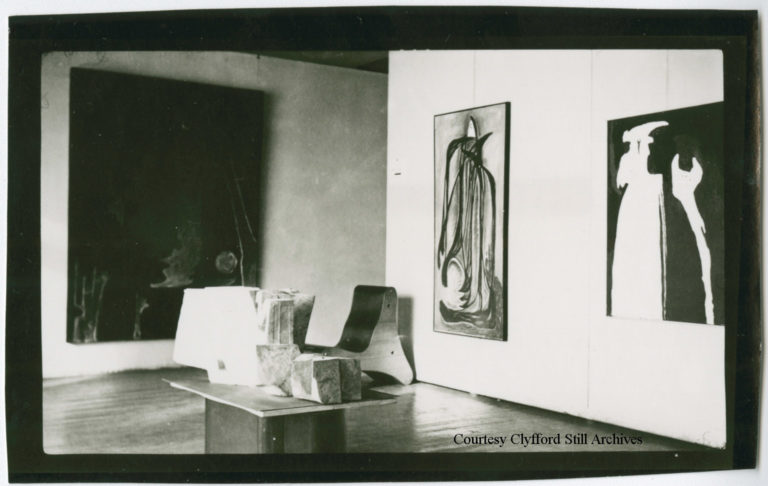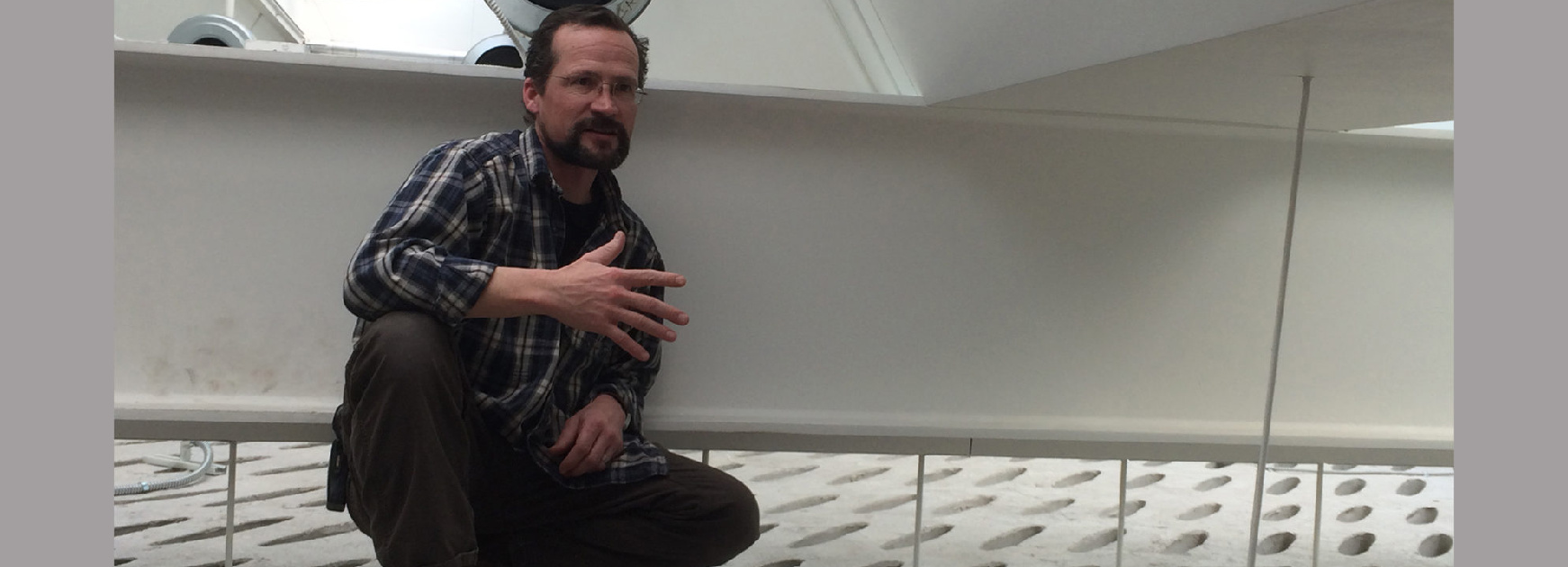By Kristin Kirsch Feldkamp
We’re taking you behind the scenes again in our second installment of Staff Favorites, highlighting Clyfford Still’s works through the eyes of those who spend the most time with them. Next up is David Finch, director of facilities, who tells us that he has been working with his hands all his life. The skills he developed—studying art, as a woodworker, as a preparator, and then as facilities supervisor at the Denver Art Museum—make it easy for Finch to be the Museum’s go-to guy on all things mechanical and more. In addition to managing the daily challenges of running and maintaining a museum building, Finch is the lead on the exhibition-installation team and knows a thing or two about art.

David Finch: I was a little reluctant to pick PH-315 as my favorite work because it almost seems a bit trite—the facilities guy is picking the one with tools. But it’s much more than that to me. In my mind, PH-315 makes a statement which none of the other paintings do. I could be wrong. David Anfam said that [in PH-315] Clyfford Still painted tools that were in his environment. But I think that Anfam didn’t really understand what kind of tools these were. When you look at them, what do you see?
Kristin Feldkamp: I see a hammer and a wrench.
DF: Right. That’s exactly what he said and you’re not wrong. But it’s not just a hammer and it’s not just a wrench. And in fact, it’s not even really a hammer. The tool on the left is actually a fence repair tool. And you can tell in a couple of ways. One, how the handle really spreads out. So the fence repair tool is many tools in one. It’s got the hammer. It’s got a spike on the end which is used if you need to remove staples from a wire fence. You would pop it in there and pull the staples out and you could use the hammer to pop new staples back in. And then where the red part is, that’s the real bitey bit that you cut the wire with and then you can also twist it.
KF: To me it looks like a body too.
DF: Kind of. This is around the time that he’s anthropomorphizing a lot of things. Having grown up on a ranch, this would have been a tool he was very familiar with. It’s not a tool you would use to build fences because it is only about this big [indicates a size around ten inches] and it’s shaped like a large pair of pliers. It would be a lot of work just on your forearm. If you were building a fence you would use much bigger tools. But you need to maintain fences because fences weather and fall apart. You would take this tool with you and walk the miles of fence that you have and work on repairing them.

KF: So what statement do you think he’s making? We just shared a quote on social media where he actually talked about machinery and how his knowledge of machinery has gotten him out of some tricky situations in life. It seems he thought about machinery a lot.
DF: I think if you look at some of his early paintings when he’s starting to move toward abstraction, like the one with the farmers who are leaning down [PH-77], you might think that Still is making a statement. These guys are obviously not farmers. They’re picking wheat up off the ground that looks like it’s been left after everything else has been picked up. But Still said that he’s not making a statement because these are strong, fit people and they don’t need anyone to make statements for them. Where I think PH-315 makes a statement is that it features a tool that has been used since wire fencing came around (the mid-1800s or so), and that tool has remained unchanged for the most part; but the tool that’s on the right — it is a wrench, but it’s an offset structural spud wrench. It’s a wrench that’s about this tall [indicates about a yard] and used in iron working to building skyscrapers and boats. In World War II they would have been all over the place. Clyfford Still worked at the shipyards [during World War II] so he would have been very familiar with these. In my opinion—as I said I’m not an expert—I think he’s making a statement about how his world has changed.
